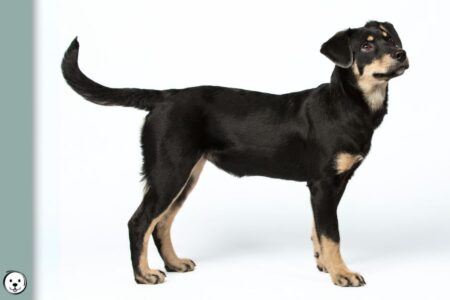Whitehead describes a phenotype that creates white areas on the face and body. Unlike piebald spotting, whitehead causes white markings to appear from the head rearwards.
What is Whitehead?
Whitehead causes white markings on the face, often with white over both eyes. But extended forms of whitehead can also cover part of the pigment pattern on the rest of a dog’s body.
In some of the dogs with a whitehead pattern, the white markings grow big enough to not only cover the face but also the neck, chest and front legs.

White can even extend beyond the withers and can cause white on the belly, flanks, back or loins until at least the front half of the dog is predominantly white.
All in all, whitehead can cause many different phenotypes:
The genetics behind a whitehead phenotype have not been identified yet (head over to the canine whitehead research website or GoFundMe to learn more).
We can’t explain the exact mechanism causing the whitehead phenotype. But we do know that it works separately from the piebald phenotypes found in many different breeds.
In dogs with regular white spotting, the color begins to disappear from the chest, legs and tail upwards. Typically, the head is the last body part to lose color on a dog with piebald. But on a dog with whitehead, the head is the first area to lose pigment!


Whitehead can be hard to distinguish from other patterns like Irish spotting or piebald. And even some merle phenotypes can contribute to white spotting.
And of course, dogs with whitehead can also be merle, piebald or Irish-spotted at the same time which makes it virtually impossible to attribute white markings to one cause or the other.
How does Whitehead look?
Whitehead creates many patterns that are considered as mismarks.
Whitehead markings are associated with an extended amount of face white. But some whitehead phenotypes are more subtle than others:
- White around the lips
- Split face
- Eye patch
- Asymmetrical blaze
- Very wide blaze
- Blaze connecting to collar
- Hourglass blaze, Panda bear blaze
- All-white face
High amounts of head white can sometimes cause blue eyes, pink skin and nose spots. The lack of pigment can alsoincrease the risk for a puppy to suffer from congenital deafness.







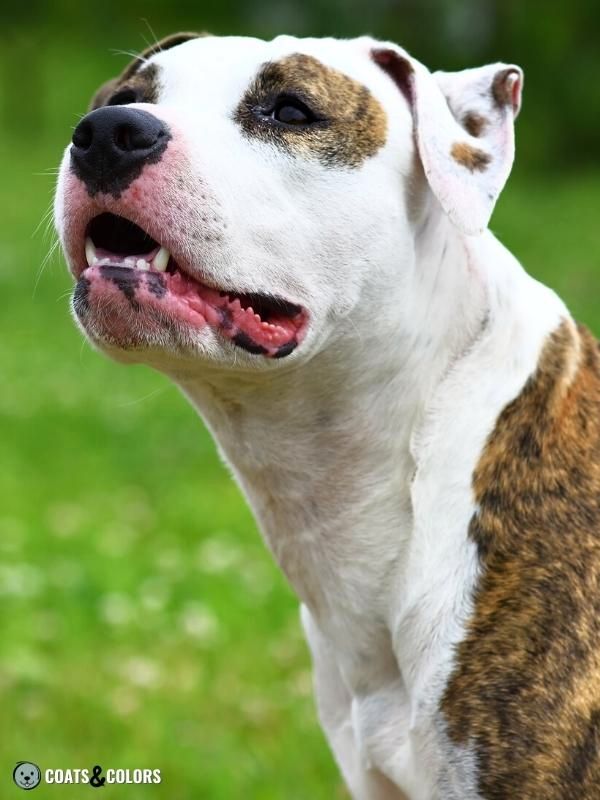
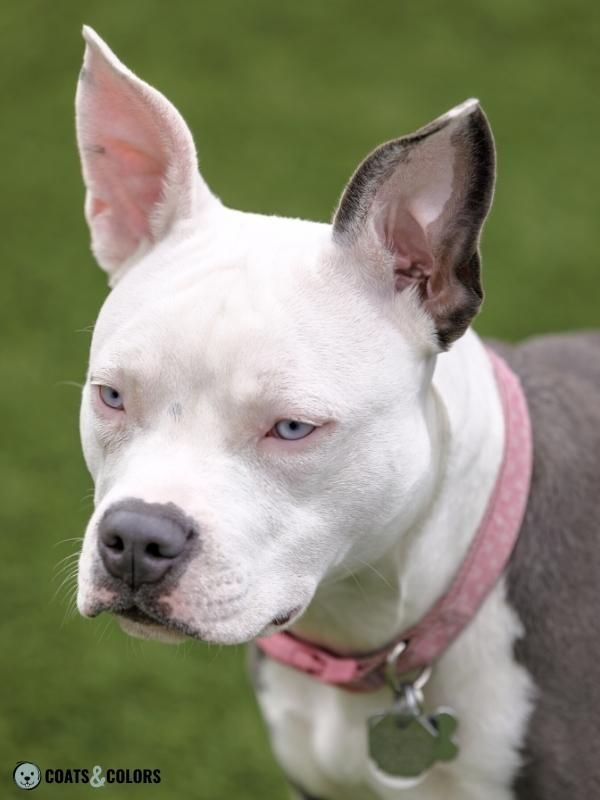

Areas that keep pigment the best are usually found around so-called pigment centers. During embryonic development, the body sends the precursors of pigment cells from the neural crest to these pigment centers from where they spread to the rest of the body.
The pigment centers on the head seem to be located at the eyes, ears and forehead. Whitehead seems to be able to partially or fully shut down the ability of the pigment cells to migrate to their designated locations. Sometimes you can see which pigment center lost some of its function and which didn’t.

More subtle expressions of whitehead are easily missed but mating two affected dogs can result in puppies with a surprisingly high amount of white.
Whitehead is an inheritable trait that seems to work in an incomplete dominant manner. But its expression certainly has some stochastic components.
Affected dogs don’t produce a distinct pattern in all their offspring, e.g. you can’t accurately predict if a dog with a split face will also produce puppies with a split face pattern.

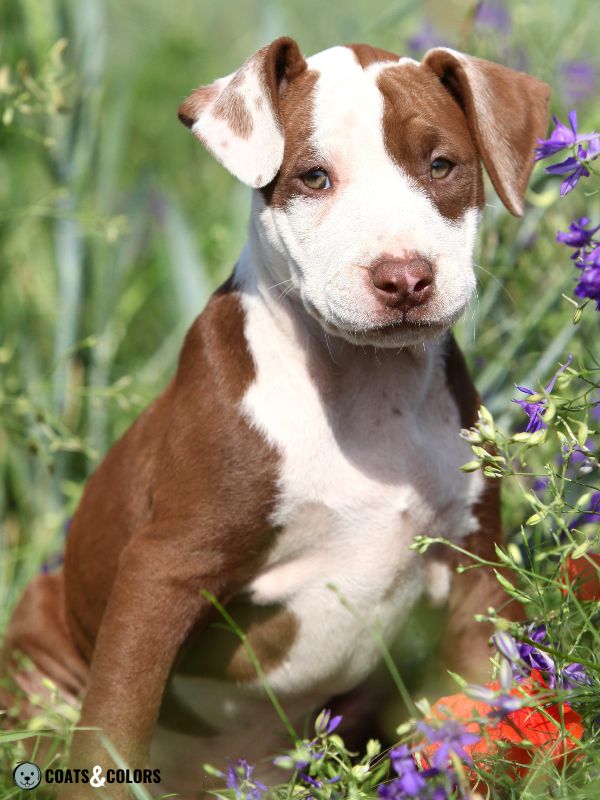
Breeds affected by Whitehead
Whitehead patterns are found in many dog breeds from different breed groups[1]. In some of these breeds, whitehead is very common, in others it happens very rarely.
Since many of the affected breeds also very often come with Irish spotting, piebald or merle some additional smaller white markings on the muzzle or forehead from whitehead don’t stand out that much.
But whitehead also creates split face patterns, wide blazes, asymmetrical blazes or all-white faces which are very obvious to spot.
Whitehead in Herding Breeds
Whitehead occurs in very many herding breeds. About every Australian Shepherd seems to have this traita and the white front half in Old English Sheepdogs is one of the breed’s hallmark traits.
- Australian Koolie
- Australian Shepherd
- Bearded Collie
- Border Collie
- Cardigan Welsh Corgi
- English Shepherd
- Miniature American Shepherd
- Old English Sheepdog
- Pembroke Welsh Corgi
- Rough Collie
- Shetland Sheepdog
- Smooth Collie




Whitehead in Mastiffs and Mountain Dogs
In mountain dog breeds a whitehead pattern can create obvious mismarks with too much white on the head:
- Bernese Mountain Dog
- Great Swiss Mountain Dog
- St. Bernard

Whitehead in Terriers
Many of the non-solid terrier and bull-type terrier breeds with extended white markings and only very little color on the head. This can make patterns caused by whitehead harder to spot.
- American Pit Bull Terrier
- American Staffordshire Terrier
- Bull Terrier
- Fox Terrier (Smooth)
- Fox Terrier (Wire)
- Jack Russell Terrier
- Miniature Bull Terrier
- Parson Russell Terrier
- Staffordshire Bull Terrier
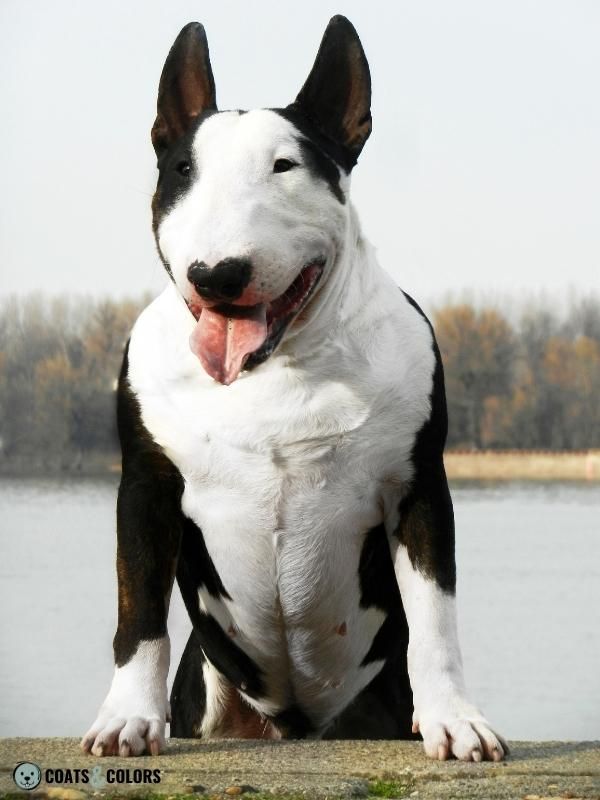



Whitehead in Bulldogs
Whitehead happens very frequently in a variety of bully breeds:
- American Bulldog
- American Bully
- Alapaha Bulldog
- Boston Terrier
- Boxer
- English Bulldog
- French Bulldog
- Olde English Bulldogge
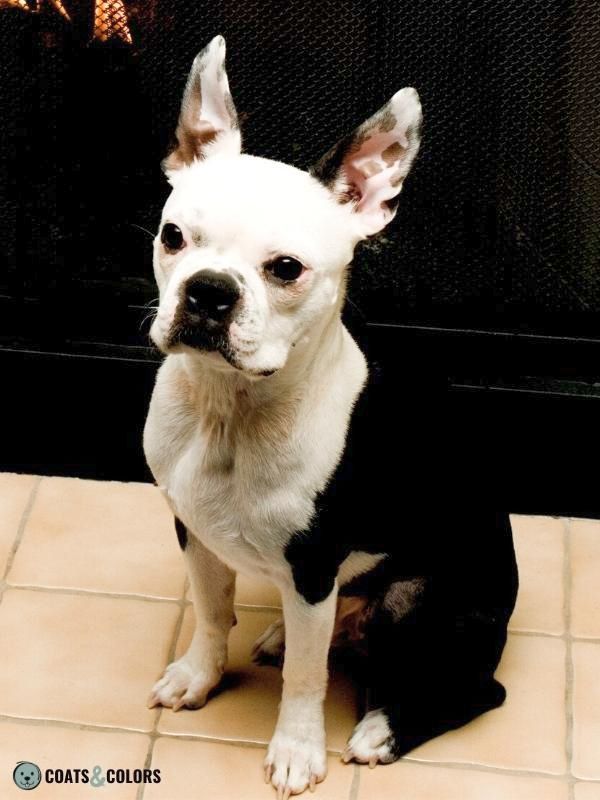





Whitehead in Spitz-Type Breeds
Even some old or even primitive dog breeds can sport a whitehead pattern:
- American Akita
- Finnish Lapphund
- German Spitz
- Icelandic Sheepdog
- Karelain Bear Dog
- Yakutian Laika



Whitehead in Hunting Dogs
Some hunting breeds from very different breed backgrounds can have a whitehead phenotype:
- Basset Hound
- Beagle
- Catahoula Leopard Dog
- English Springer Spaniel
- German Hound
- Spanish Water Dog
- Welsh Springer Spaniel




Whitehead in Companion Dogs
These are the smaller fluffy toy breeds with the occasional whitehead pattern:
- Cavalier King Charles Spaniel
- Chinese Crested Dog
- Japanese Chin
- King Charles Spaniel
- Lhasa Apso
- Papillon
- Shih Tzu
- Tibetan Spaniel
- Tibetan Terrier





Whitehead in Sighthounds
In sighthounds a whitehead phenotype can look very peculiar:
- Greyhound
- Ibizan Hound
- Italian Greyhound
- Whippet
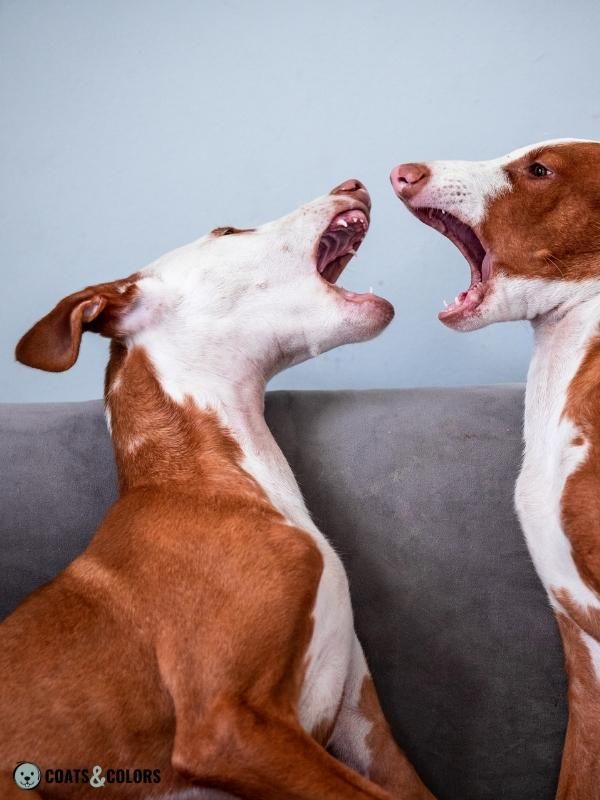


Learn More
Links
[1] Canine Whitehead Research.
[2] Finding Whitehead (Facebook Group).
Image Credits
© infinityyy/yayimages.com

Hi! I’m Steffi. I am a biologist and a big time dog nerd. You are curious about coat color genetics? You’ve come to the right place! Read more.





